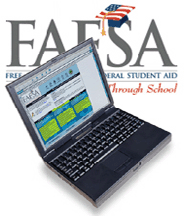When we see the word FREE, we automatically ask ourselves, “What’s the catch?” The promise of FREE usually includes statements like “pay shipping and handling” or “a small subscription cost”. This time FREE means FREE!
My good friend and colleague,Paul Hemphill, is offering to my parent and student readers the opportunity to get his time-honored and valuable video series for FREE. There’s no catch. He’s doing it because he believes in them and he believes that parents and students need some help with the college process. Paul has sold these videos in the past, but he’s willing to GIVE THEM AWAY to anyone who subscribes to this email link.
http://forms.aweber.com/form/29/616398929.htm
He’s not going to sell your email or contact you about his coaching services. As hard as it is to believe (in this skeptical, not trust anyone culture) there is NO CATCH. Every week, you will receive two emails with video coaching related to the college admissions process. He has unique insight on how to “market” your student to the college and he knows how to get results with this tactic. While counseling clients over the last several years, he has developed this series to share with them during the coaching process. My readers get it FREE!
Here’s what you can look forward to over the next 52 weeks:
- Relevance: The videos are topical and address the immediate concerns of most parents and students. By contrast, you will never see a video on how to get into an Ivy League college since the great majority of students will never apply to the Ivys. “My approach”, says Paul, “is not to waste the viewer’s time.”
- Controversial: Some of these college admission tips on video are disturbing to colleges, but this isn’t the market for which the videos are designed. Colleges will repel at the suggestion in one video that parents make multiple deposits on the standard May 1 deadline. Another video suggests that a student should absolutely apply to at least 10 colleges.
- Short: These videos are no longer than 2 minutes in length; long enough to contain a lot of useful information and short enough to satisfy short attention spans in a fast-pace culture.
- Content: The focus is on what will work for both parents and students. For example, a video will suggest what topics must be avoided in writing the college application essay. Or, how a parent can save $11,000 by what a student does with free time.
- Humor: It may be in the form of a funny story that drives the point home, or a one-liner, maybe even a facial expression. Introductions to the video’s topic are intended to grab your attention. One video starts this way: “I’m going to show you how to be shallow and superficial in a college admissions office!”
- Approach: Each video presents a problem and then suggests a viable solution. Some solutions are so simple that you’ll conclude you haven’t seen or read about this anywhere else. “My own clients,” says Paul, “are universal in their opinion that these videos are to-the-point and no-nonsense all the way.”
- Themes: The easier ways to pay less for college and the easier way to get in. Paul looks for every angle that will make it easier for you to pay for college, and he leaves no stone unturned on some original and creative ways to get into college without appearing brass or slick.
If you still aren’t convinced, listen to all of Paul’s testimonials from current and past clients.
http://www.collegehelp.biz/my-testimonials.html
What’s the best part? For you, it’s absolutely FREE. And if you aren’t interested or don’t find these videos helpful, you can unsubscribe at any time. I know, however, that you will be so impressed that you will contact Paul to help you and your student personally with the process.
What have you got to lose? The thousands of dollars you will save by watching these videos and FREE help with the college admissions process!









